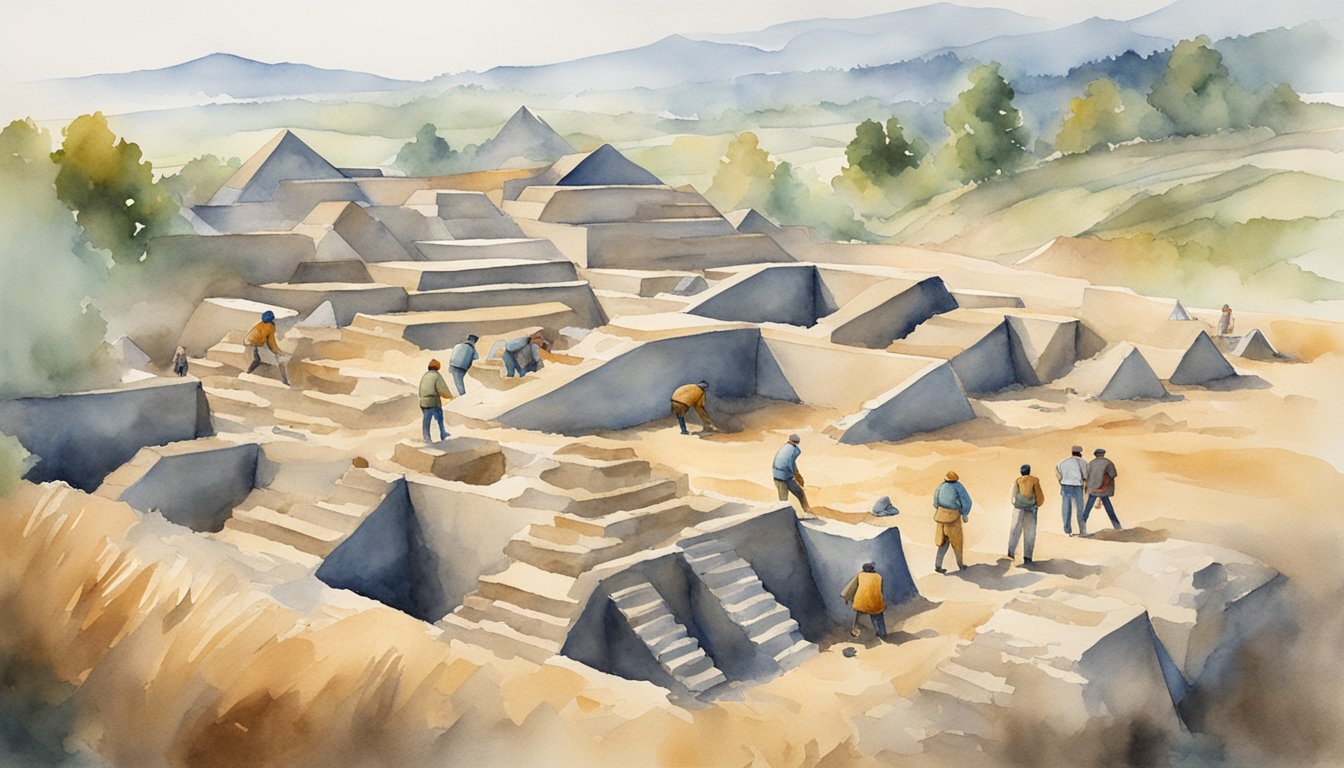Origins and Discovery

The Bosnian Pyramids, often regarded with intrigue and skepticism, were brought to the world stage by Semir Osmanagic who put forth claims of ancient pyramids in Visoko, Bosnia.
Initial Findings by Semir Osmanagic
Semir Osmanagic, also known as Sam Osmanagich, stumbled upon the Visocica hill in the city of Visoko in 2005. He proposed that the hill was not natural but an engineered structure—the Bosnian Pyramid of the Sun. Osmanagic estimates the age of these pyramids to be an astonishing 12,000 years, dating them back to the end of the last Ice Age.
Historical Context and Claims
The idea of an ancient pyramid in Bosnia, as presented by Osmanagic, suggests a previously unknown ancient civilization in the region. While mainstream archaeologists remain unconvinced, Osmanagic asserts that these man-made structures are likely the oldest known pyramids on Earth. His discovery has since sparked both excitement and controversy within the global community.
Controversy and Debates
The Bosnian Pyramids, located in Visoko, have been the center of intense debate since their initial claim as ancient man-made structures. Critics question their authenticity and the motives behind their promotion.
Scientific Skepticism
Many scientists and archaeologists have expressed skepticism regarding the claim that the hills in the Visoko region are man-made pyramids. The European Association of Archaeologists, for instance, has denounced the findings as a hoax, suggesting that the formations are natural geological features. Esteemed geologists and experts like Robert Schoch have also stated that the hills do not display characteristics that would categorically distinguish them as pyramids.
Nationalism and Economy Impacts
The debate over the Bosnian Pyramids transcends scientific discourse, extending into the fields of nationalism and economic impacts. Advocates for the pyramids assert that these structures are part of the country’s cultural heritage, potentially serving as a symbol of national identity in the post-Bosnian War era. Additionally, the local economy has seen a positive effect due to the influx of tourists drawn by the mystery of the pyramids. However, critics remain cautious, with some labeling the promotion of the site as a “cruel hoax,” potentially exploiting the public’s fascination with pseudoarchaeological claims akin to tales of Atlantis or pyramid power theories involving torsion fields.
Excavation and Research

The Bosnian Pyramids, particularly the Pyramid of the Sun and Pyramid of the Moon, have been at the center of ongoing excavations that fuse traditional archaeological methods with a touch of mystery. A diverse team of researchers, including archaeologists and volunteers, tirelessly work to uncover the secrets held within.
Explorations and Methodologies
Initial explorations began with the purchasing of land around the suspected pyramids, an endeavor that is still underway. Teams follow a methodology that includes both invasive and non-invasive techniques such as thermal analysis. This allows them to study the internal structure without causing significant damage.
Significant findings include the Ravne tunnels, a sprawling underground network believed to be connected to the pyramids. These tunnels serve as much for research as a tourist attraction. Detailed examinations have led to the discovery of mosaics on the plateau, suggesting a complex historical backdrop possibly extending back to the Greco-Roman period.
Economic and Cultural Impact
The excavation of the Bosnian Pyramids, particularly the Pyramid of the Sun and the Pyramid of the Moon, have woven themselves into the cultural and economic fabric of Bosnia. They are pivotal in drawing tourists who travel seeking the connection between the pyramids and the Pleiades constellation, a concept that captivates many.
The allure of the pyramids has also spurred a boost in the local economy, with the growth of the Archaeological Park leading to an increased interest in the area’s health benefits attributed to the underground tunnels. Such claims often intrigue those interested in the effects of ancient structures on wellbeing.

